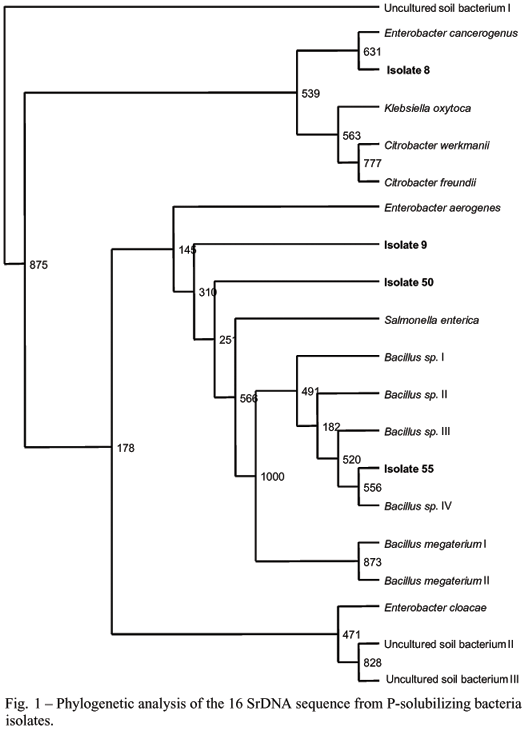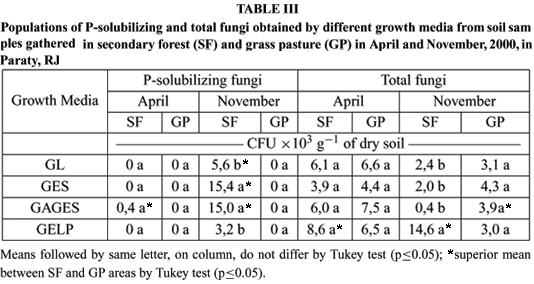Communities of P-solubilizing bacteria, fungi and arbuscular mycorrhizal fungi, were evaluated in two different ecosystems. Samplings taken from two areas of Atlantic forest, in Paraty - RJ, Brazil, one with a secondary forest and the other with a grass pasture were studied. Four growth media: GL (glucose and yeast extract), GES (glucose, soil extract, KNO3, CaCl2, MgSO4, NaCl, FeEDTA and micronutrients solution), GAGES (glucose, soil extract, arabinose, glycerol, CaCl2, MgSO4 and NaCl) and GELP (glucose, soil extract, yeast extract, peptone, CaCl2, MgSO4 and NaCl) were evaluated for the isolation of P-solubilizing microorganisms. The identification of P-solubilizing bacteria was based on 16 S rDNA sequence analysis, while the identification of P-solubilizing fungi and arbuscular mycorrhizal fungi was based on morphology. The greatest number of P-solubilizing bacteria was isolated using GL and GELP growth media. The greatest number of P-solubilizing fungi was isolated using GAGES and GES. The bacteria were identified as Enterobacteriaceae and Bacillus sp., while the P-solubilizing fungi were identified as Aspergillus sp. Glomus macrocarpum and Glomus etunicatum were the dominant mycorrhizal fungi in the secondary forest and grass pasture area, respectively.
phosphate; Enterobacteriaceae; Atlantic Forest; Glomeromycota; soil microorganisms





